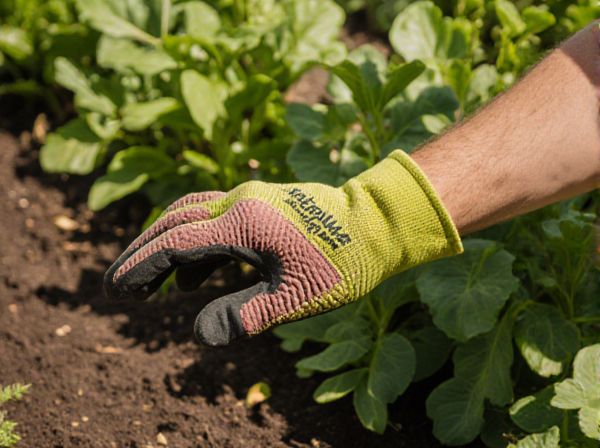
Bulk Harvest vs Precision Harvest Illustration
Bulk harvest involves collecting crops on a large scale without sorting, maximizing speed and volume but often sacrificing quality and yield accuracy. Precision harvest uses advanced technology like GPS and sensors to gather crops more selectively, enhancing efficiency and reducing waste by targeting optimal areas. This method improves data collection for better farm management and crop prediction.
Table of Comparison
| Feature | Bulk Harvest | Precision Harvest |
|---|---|---|
| Method | Collects entire crop simultaneously | Targets specific areas or crop qualities |
| Efficiency | Higher speed, less precise | Optimized yield, reduced waste |
| Cost | Lower initial investment | Higher technology and operation cost |
| Quality Control | Limited sorting capability | Enhanced sorting by crop condition |
| Data Integration | Minimal or no data use | Utilizes GPS and sensor data |
| Environmental Impact | More waste, less sustainable | Reduces resource use and loss |
Understanding Bulk Harvest and Precision Harvest
Bulk harvest refers to the traditional method of collecting crops in large quantities without separating individual plant characteristics, optimizing speed and volume but often sacrificing quality differentiation. Precision harvest utilizes advanced technologies such as GPS, sensors, and data analytics to target specific crop areas, enhancing yield quality and reducing waste by analyzing plant-by-plant conditions. Understanding the distinctions between bulk harvest and precision harvest enables better decision-making for maximizing efficiency, crop value, and sustainability in agricultural operations.
Key Differences Between Bulk and Precision Harvesting
Bulk harvesting involves collecting large quantities of crops quickly with minimal selectivity, prioritizing speed and volume over individual plant quality. Precision harvesting utilizes advanced technologies such as GPS, sensors, and data analytics to selectively harvest crops based on ripeness, quality, and field variability, optimizing yield and reducing waste. Key differences include efficiency in resource use, crop quality management, and the ability to adapt harvesting strategies to specific field conditions.
Advantages of Bulk Harvest in Gardening
Bulk harvest in gardening allows for faster collection of crops, saving significant time during peak harvesting periods. Larger volumes reduce labor costs due to the efficiency of gathering produce all at once. This method also supports uniform processing and storage, minimizing spoilage and optimizing supply chain management.
Benefits of Precision Harvest for Gardeners
Precision harvest allows gardeners to selectively pick ripe fruits and vegetables, reducing waste and maximizing crop yield quality. This method enhances resource efficiency by targeting specific plants, leading to better flavor and nutritional value. Gardeners benefit from improved crop management and less labor-intensive harvesting compared to bulk harvest.
Crop Types Best Suited for Bulk Harvest
Bulk harvest methods are best suited for large-scale crops like grains, corn, soybeans, and sugar beets, where uniformity and volume are critical for efficient processing. These crops benefit from bulk harvesting due to their consistent ripening times and ability to withstand mechanical handling without significant quality loss. Bulk harvesting optimizes fuel and labor costs, making it ideal for producers aiming for high throughput and economies of scale.
When to Choose Precision Harvest Methods
Precision harvest methods are ideal when maximizing crop yield and quality is crucial, especially for high-value or heterogeneous fields where variability in soil and plant conditions exists. Using GPS-guided machinery and real-time data analysis, farmers can selectively harvest areas at optimal maturity, reducing waste and improving efficiency compared to bulk harvest approaches. Precision harvest is recommended during variable maturity stages or when detailed yield mapping is required for future crop management and resource optimization.
Impact on Yield: Bulk vs Precision Harvest
Bulk harvest methods often lead to higher losses due to uniform treatment of entire fields, reducing overall yield efficiency. Precision harvest leverages GPS and sensor data to target specific crop zones, maximizing recovery and minimizing waste. Studies show precision harvesting can increase yield by up to 15% compared to bulk harvesting by optimizing crop collection and reducing damage.
Tools and Equipment for Each Harvesting Method
Bulk harvest relies on large-scale machinery such as combine harvesters and grain carts designed for high-capacity, fast collection across extensive fields. Precision harvest employs advanced tools like GPS-guided harvesters, yield monitors, and variable-rate technology to optimize crop collection accuracy and reduce waste. Integrating IoT sensors and data analytics in precision harvest equipment enhances real-time decision-making and resource efficiency.
Labor and Time Considerations in Harvesting
Bulk harvest methods require significantly more labor and longer time frames due to the large volumes handled simultaneously, often leading to increased manual effort and equipment wear. Precision harvest techniques optimize labor by targeting specific, high-yield areas with advanced technology, reducing time and minimizing workforce requirements. Efficient labor allocation and time management in precision harvesting enhance overall productivity and cost-effectiveness in crop collection.
Future Trends in Garden Harvest Techniques
Bulk harvest techniques maximize efficiency by collecting large quantities of produce simultaneously but risk increased waste and reduced crop quality. Precision harvest leverages advanced technologies like AI, drones, and IoT sensors to selectively pick ripe crops, enhancing yield quality and reducing resource use. Future trends in garden harvest emphasize integrating machine learning and robotics for real-time crop monitoring and targeted harvesting, promoting sustainability and minimizing labor costs.
Bulk Harvest vs Precision Harvest Infographic

 gardendif.com
gardendif.com